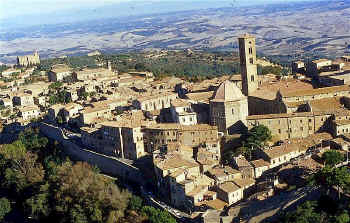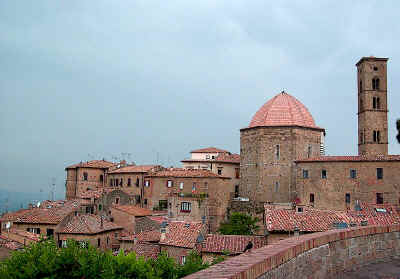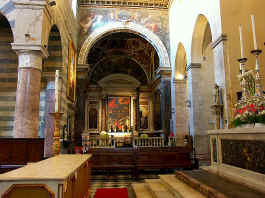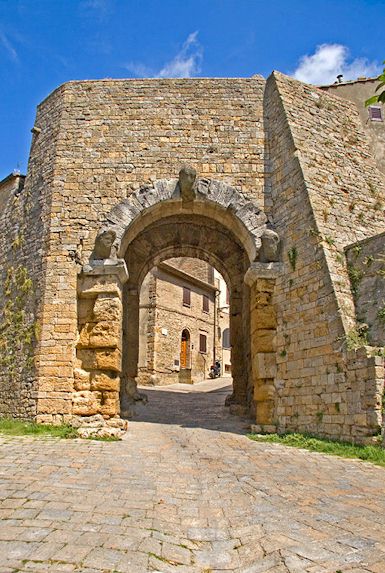The Twilight Saga: New Moon
The novel and film of this name are set partly in Volterra. The film, starring Kristen Stewart, Robert Pattinson, and Taylor Lautner, whoever they might be, retains the setting, presumably to stay consistent with the novel and because the Volturi vampire clan take their name from Volterra. In fact, after a late decision, the "Volterra" location scenes were filmed in Montepulciano.
|
 |  | ||

Volterra stands on a rocky hill some 1770 feet above the sea level, located between the rivers Bra and Cecina, and is surrounded by strong walls. The district is rich in alabaster, the working of which was an important industry of the city, and in mineral waters, such as those of S. Felice and the Moie, or salt springs. Still more important are the Soffoni of Larderello, from which boric acid is extracted, the sulphur lake of Monterotondo, the copper springs of Caporciano, and the baths of Montecatini Val di Cecina.
The Cathedral (duomo) of Volterra, consecrated by Callistus II in 1120, was enlarged by Andrea Pisano in 1254, and again in 1576. The high altar is adorned with sculpture by Mino da Fiesole. Among the pictures is an "Annunciation" by Luca Signorelli, and there are pictures by Benvenuto di Giovanni, Leonardo da Pistoia, and others. In the baptistery (1283) are a font by Sansovino and a ciborium by Mino da Fiesole.
Chapel of St. Paul, in the Duomo
Other churches are those of S. Lino (1480) and S. Francesco.
The Palazzo Publico (1217) holds the extensive archives of the city. The Palazzo Tagani houses an important museum of Etruscan and Roman antiquities.
| |||













No comments:
Post a Comment